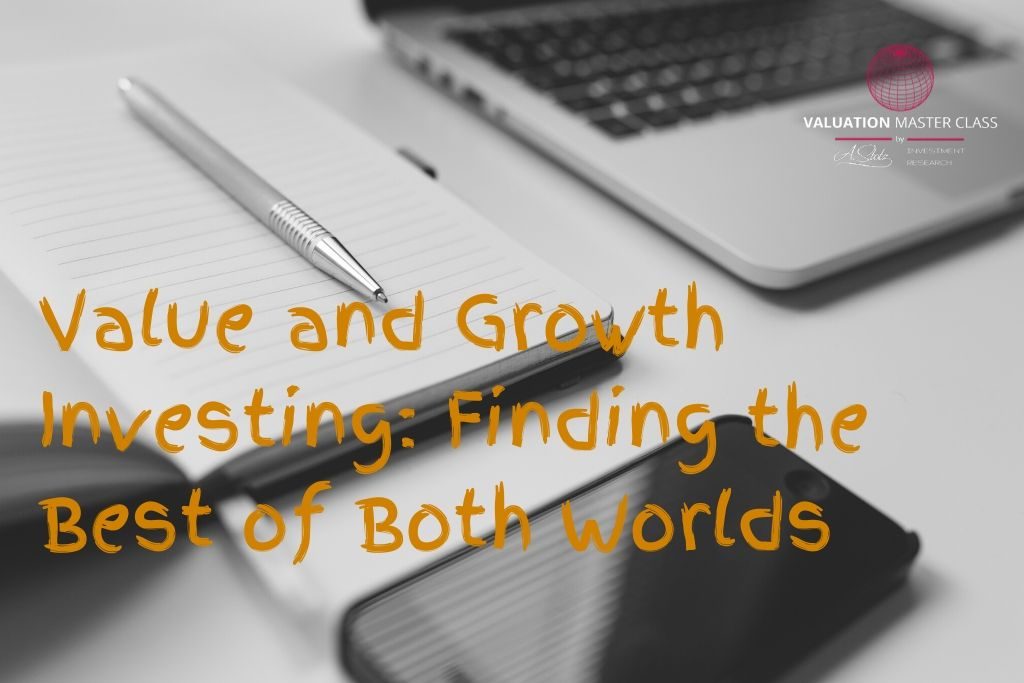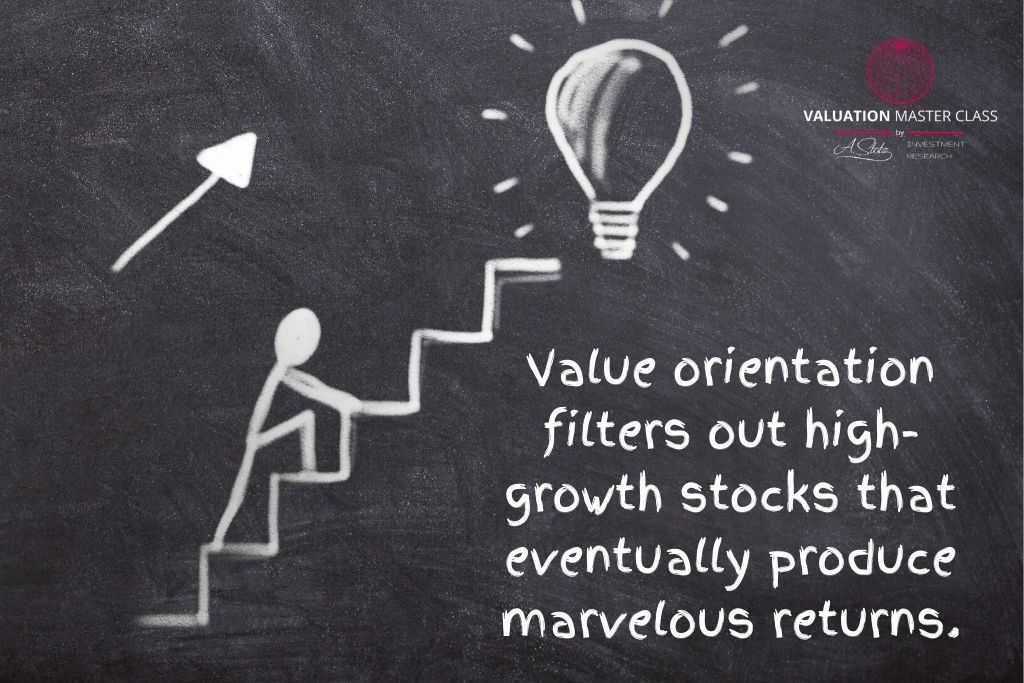Value and Growth Investing: Finding the Best of Both Worlds

This is a Valuation Master Class student essay by Kontee Siravongtanawadi from January 16, 2020. Kontee wrote this essay in Module 2 of the Valuation Master Class.
Growth investing is an investment style that focuses on seeking investments in companies that have high growth potential in their size and position in their industry. Meanwhile, value investing is an investment strategy that seeks returns through the discovery of undervalued stocks as well as finding a margin of safety. There is much discussion of who engages in these strategies and which strategy is best. However, the best investment strategy is neither. Rather it is based on investors’ critical thinking, due diligence, and using methods that combine value and growth strategies such as Peter Lynch’s PEG and dividend adjusted-PEG ratios.
The Basics of Growth Investing
Growth investing is an investment style that concentrates on investing in companies that have strong growth potential in size and significance within their industry. The stocks that growth investors pursue are usually overpriced compared to their current revenues and earnings. Growth investors are willing to pay premiums for growth stocks if they are convinced the company has the potential to produce high shareholder returns. Another reason is that investors believe the said company has the potential to become a market leader. An example of a successful growth investor is T. Rowe Price, ‘the father of value investing’. According to “Value versus Growth Investing: Why Do Different Investors Have Different Styles?” (2015), Price preferred companies characterized by strong earnings growth, research and development intensity, and innovation.
Despite the potential of achieving life-changing profits through this investment style, growth investors can fail dramatically. Many growth investors failed during the 2000-2001 Dot Com Bubble Burst as many promising, high-growth internet companies suddenly declined. For example, Priceline.com fell from $94 per share to less than $4 per share within eight months starting from March 2000 to November 2000 (Kleinbard, 2000).
The Value-Orientated Approach
When reading about growth investing, one will see its value-oriented counterpart. As the opposite of growth investing, value investing aims to maximize returns by discovering undervalued stocks in the market. This investment style requires investors to evaluate a company’s shares through its intrinsic value with valuation methods—such as discounted cash flow analysis—and compare it to the stock’s current market price. Value investors tend to buy the stock if there is a plausible margin of safety between the stock’s intrinsic value and its market price. Also, individuals adopt the value approach if they have firsthand experience with adverse macroeconomic events and an underprivileged socioeconomic status. The father of value investing, for example, Benjamin Graham is no stranger to this category. Graham grew up very poor with a deceased father. Additionally, his mother lost the family’s savings during the 1907 stock market crash. Unlike Price, Graham’s focused on companies with comparatively low valuation ratios such as P/E and P/B ratios (Cronquist, Siegel, and Yu, p. 4-7).
Although value investing has proven to be successful and less risky than its growth counterpart, because of its emphasis on the margin of safety, there are still limitations. Value orientation filters out high-growth stocks that eventually produce marvelous returns. For example, an Associated Press article noted how Warren Buffet—an all-time great investor and champion of value investing—referred to himself as an “idiot” for not buying Amazon’s stock (2019). As mentioned, the value investor’s emphasis on low valuation ratios ensures bets are as risk-averse as possible. However, this approach may crowd out opportunities such as Amazon in 2017 before its prominence in the e-commerce industry.
The Best of Both Worlds
Instead of focusing on one approach, some of the world’s greatest investors employ value and growth strategies to their portfolio to consistently outperform the benchmark. Peter Lynch is a prime example of how to successfully invest in this hybrid.
Lynch is one of the greatest mutual fund managers in history. During his 13-year career running the Magellan Fund at Fidelity Investments, Lynch earned an annualized return of 29.2% and outperformed the S&P 500 except for two years (Chen, 2019). He accomplished this feat by combining value and growth principles. For example, he integrated the emphasis on the margin of safety with a company’s growth potential by comparing a company’s P/E ratio with its current and forecasted growth rates. In his book One Up on Wall Street, Lynch explained this method:
“If the P/E of Coca-Cola is 15, you’d expect the company to be growing at about 15 percent a year, etc. But if the P/E ratio is less than the growth rate, you may have found yourself a bargain.”
However, this approach is applied differently if the P/E ratio is higher than the growth rate. If a company has a growth rate half of its P/E ratio, it is not attractive unless investors consider other variables like earnings growth and dividend yield. Lynch developed the dividend-adjusted PEG ratio for this reason. If a blue-chip stock has a P/E ratio of 18 and an earnings growth of 9%, it may seem expensive. However, if the stock has a dividend yield of 10%, it is now undervalued.
P/E ratio: 18
PEG (Price-Earnings Ratio/Earnings Growth) = 18/9 = 2.0
Dividend-Adjusted PEG ratio (P/E ratio / (Earnings Growth + Dividend Yield)) = 18 / (9+10) = 0.947
In conclusion, by adjusting the ratios, stock can be recognizably cheaper than before. Also, when employing Lynch’s formulas along with qualitative factors—such as whether the company has or will have a competitive advantage—can greatly maximize returns. However, the formulas do not always identify incredible long-term investing opportunities. For example, Amazon in 2012 had a P/E ratio of 3,633, but by 2020 the stock has increased by over 7x multiples due to incredible customer service and supply chain innovation (MacroTrends.com). Investors must think critically by combining value-orientation with growth investing as well as quantitative and qualitative factors.
References
Chen, J. (2019, Aug 18). Peter Lynch. Investopedia.
Cronquist, H., Siegal, S., Yu, F. (2015). Value versus growth investing: Why do different investors have different styles?. Journal of Financial Economics, 117(2), 333-349.
Kleinbard, D. (2000, Nov 09). The $1.7 trillion dot.com lesson. CNN Money.
Lynch. P. (1989). One Up on Wall Street. New York, NY: Simon & Schuster.
(2019, May 03). Warren Buffett calls himself an ‘idiot’ for not buying Amazon shares, but now Berkshire Hathaway is on board. The Associated Press via The Chicago Tribune.
(2019). Amazon PE Ratio 2006-2019 | AMZN. MacroTrends.com.

